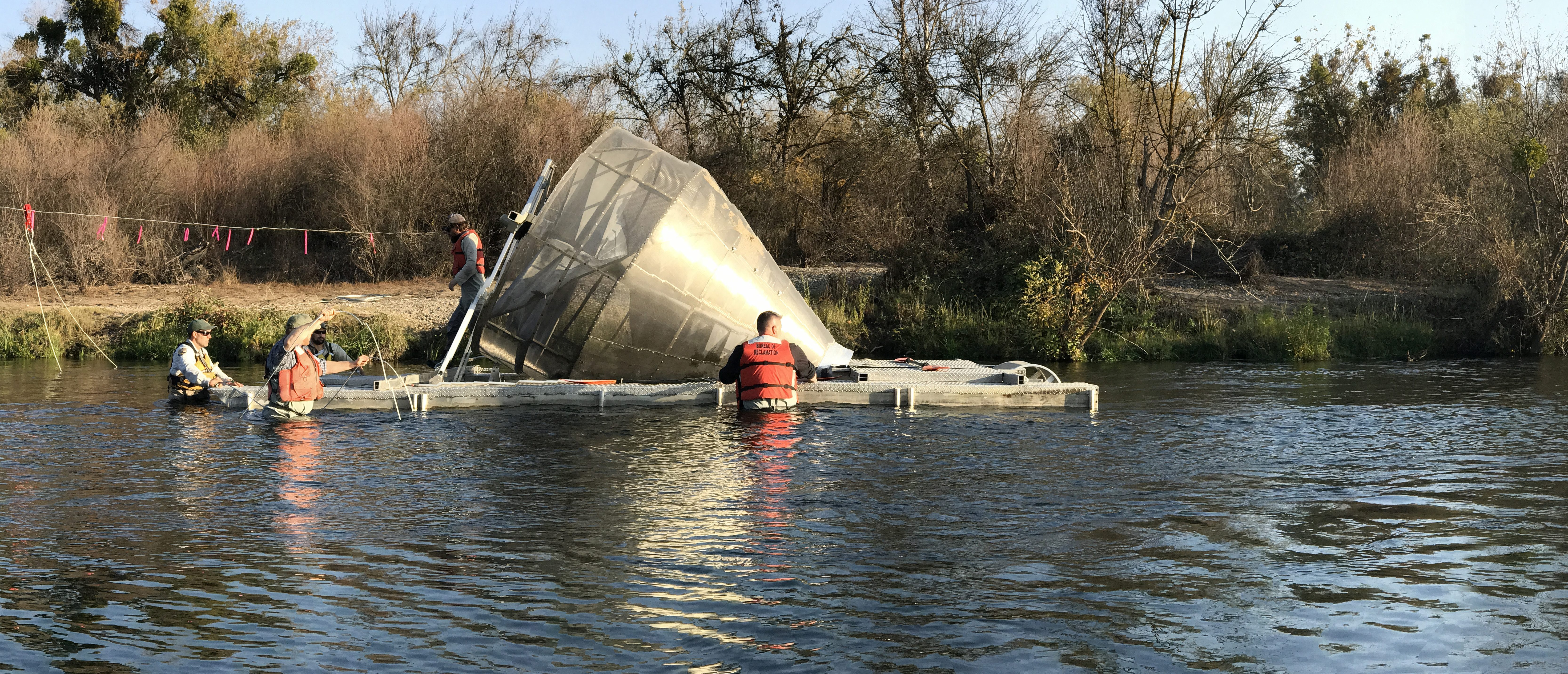
December 1, 2017
Seasonal Monitoring Reveals a Program Milestone: Successful Spawning
A multi-agency effort to bring salmon runs back to the San Joaquin River has proven it is possible for spring-run Chinook salmon to successfully spawn in the river – a major first milestone for the San Joaquin River Restoration Program. The information is of dramatic importance as it demonstrates that, for the first time in over 60 years, this species can breed in the river.
The San Joaquin is river heavily altered. An assortment of canals, diversion dams and other structures funnel water from the river to farms, cities and industry. While it was once home to the largest population of spring-run Chinook in the state, with the construction of Friant Dam in 1942, the prime spawning habitat for the spring-run was cut-off. The result, in combination with other factors, was the species disappearing from the river. The Restoration Program, the outcome of an 18-year lawsuit and subsequent settlement, seeks to return the fish species to the river through a collection of actions. But a key component to creating a successful return of these fish is to first understand what they need to survive.
Using rotary screw traps (large metal mesh cones placed in the river to funnel fish so they can be counted, studied, tagged and released) deployed in key locations of the San Joaquin River, program biologists have caught over 400 juvenile spring-run Chinook salmon so far. These juvenile salmon are offspring of 115 adult spring-run Chinook salmon released to the river months earlier. The traps can help to determine not only the number of fish, but also survival rates, migration timing, life history migration strategies, salmon production relationships among river flows and temperature, and lastly an overall view of which river locations are preferred by juvenile salmon. All of this information will help the Restoration Program to better understand what it takes to bring salmon back to the river.

After being caught, the juvenile fish are measured, weighed and have a tiny tissue sample taken for genetic identification before being released back to the river. The genetic information gathered helps Program biologists determine the parentage of each fish in the river. The value of this information is two-fold: a better understanding of which fish have the genetics for the greatest chance of survival in the San Joaquin River ecosystem; and, the ability to track the fish back to a specific redd (fish nest) in order to analyze which locations have the best survival rates and why.

The adult salmon – parents of the juveniles caught – were grown to adult size over the course of three to four years in tanks at the Salmon Conservation and Research Facility, located on the banks of the San Joaquin just below Friant Dam. These full-grown fish were then released into the river and some successfully spawned, producing their offspring before dying.

Though these adult salmon never migrated to the ocean or journeyed back upstream as natural salmon do, they still constructed 13 redds in the most upper reach of the river that were detected through observation.

In the coming months, Program staff also will conduct fish restoration activities which include releasing additional spring-run Chinook juveniles to the river and monitoring the lower reaches of the Restoration Area for returning adult spring-run Chinook from previous year releases.
Program staff also will conduct electrofishing and deploy netting techniques to monitor the lower reaches of the Restoration Area for potential steelhead in the river.


Implementing Agencies responsible for management of the Program are the Bureau of Reclamation, the US Fish & Wildlife Service, the National Marine Fisheries Service, the California Department of Water Resources and the California Department of Fish & Wildlife.
Listen to Valley Public Radio’s story about spring-run Chinook salmon monitoring and more about the Program here!
Read the Fresno Bee’s story about this success here!
Read more about the recent juvenile Central Valley spring-run Chinook salmon and California Central Valley steelhead monitoring efforts.


